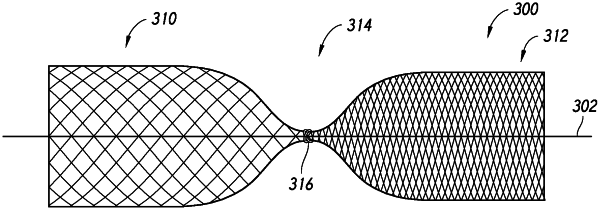| CPC A61B 17/12113 (2013.01) [A61B 17/12031 (2013.01); A61B 17/12172 (2013.01); A61B 17/12186 (2013.01); A61B 17/12177 (2013.01); A61B 2017/00526 (2013.01); A61B 2017/00893 (2013.01); D07B 5/005 (2013.01)] | 22 Claims |

|
1. A method of making an embolic device, the method comprising:
positioning a tubular braid over an elongate member, the tubular braid having first and second sections positioned on opposite sides of an intermediate section of the tubular braid, the first and second sections having respective first and second porosities, wherein the first porosity differs from the second porosity;
constraining the intermediate section in a substantially closed configuration on the elongate member;
inverting the first section over at least a portion of the second section to produce a dual-layer tubular section having a substantially closed end at the intermediate section and an open end opposite the substantially closed end;
inserting a form within the dual-layer section through the open end such that the form is positioned axially between the substantially closed end and the open end, and inward of both the first and second sections of the dual-layer section; and
setting a device body shape based on the form.
|